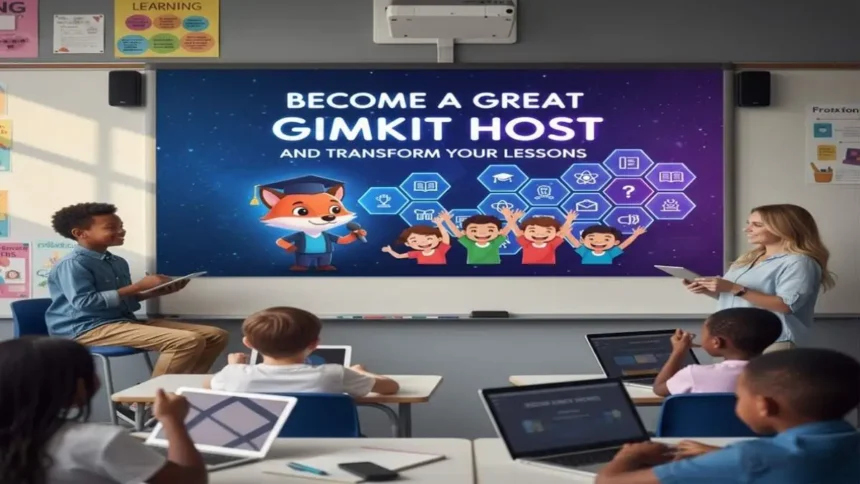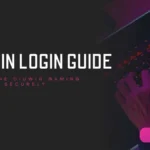As someone who has spent years exploring the evolving landscape of educational technology, I have seen firsthand how digital tools can elevate student engagement when used with intention. Among the platforms making a meaningful impact in today’s classrooms, Gimkit stands out for its unique combination of competition, strategy, and interactivity. Yet, while the platform itself is innovative, the experience hinges significantly on one key figure: the Gimkit Host.
- Table of Contents
- What Is a Gimkit Host?
- How Gimkit Transforms Traditional Assessment
- Why the Gimkit Host Role Matters
- Core Responsibilities of a Gimkit Host
- How Hosting Gimkit Enhances Student-Centered Learning
- Benefits of Serving as a Gimkit Host
- Gimkit Host vs. Traditional Quizzes: Key Differences
- Challenges for Gimkit Hosts
- FAQs
- Final Thought
Table of Contents
What Is a Gimkit Host?
A Gimkit Host is the teacher, facilitator, or organizer responsible for launching a Gimkit game session and overseeing the flow of the activity. Whether in a classroom, virtual-learning environment, workshop, or training session, the host controls all aspects of the game, from selecting the quiz format to managing game duration, power-ups, and scoring systems.
The host acts as a guide throughout the activity, ensuring students stay engaged, understand the rules, and interact with the content meaningfully. While students answer questions and earn points, the host monitors participation, provides encouragement, adjusts settings when needed, and uses live data to identify learning trends.
How Gimkit Transforms Traditional Assessment
Traditional quizzes can feel static, repetitive, or even intimidating for many learners. Gimkit changes this dynamic through features such as:
- Real-time feedback
- Game-style upgrades and power mechanics
- Competitive or collaborative modes
- Earned points and strategic spending
As a Gimkit Host, I’ve observed how even hesitant students begin participating enthusiastically when gameplay elements are introduced. Instead of simply marking right or wrong answers, Gimkit turns each question into an opportunity to strategize, earn points, and compete in a friendly environment.
Why the Gimkit Host Role Matters
- Creates an engaging learning atmosphere by guiding the pace, tone, and energy of the game.
- Transforms passive quizzes into active learning experiences, making lessons more interactive and student-centered.
- Encourages full participation by motivating hesitant or quiet students to join in.
- Ensures instructional alignment by selecting appropriate game modes and settings that support learning objectives.
- Identifies misconceptions in real time, allowing the host to pause the game and provide immediate clarification.
Core Responsibilities of a Gimkit Host
Over time, I’ve developed a rhythm for hosting Gimkit games effectively. Here are the responsibilities that define the role:
1. Preparing the Game
- Selecting or creating a quiz aligned with learning objectives
- Choosing the appropriate game mode
- Deciding on settings such as time limits or question randomization
2. Launching the Session
- Sharing game codes with students
- Ensuring everyone joins successfully
- Explaining rules and objectives clearly
3. Managing Gameplay
- Monitoring progress
- Pausing for clarification when needed
- Maintaining a positive competitive environment
4. Facilitating Discussion
- Reviewing question results
- Highlighting patterns or misconceptions
- Leading post-game reflections or mini-lessons
5. Analyzing Results
- Using Gimkit reports for performance insights
- Adjusting future quizzes based on the data
- Providing feedback to students
In essence, the Gimkit Host bridges the gap between educational content and engaging delivery.

How Hosting Gimkit Enhances Student-Centered Learning
One of the reasons I consistently integrate Gimkit into my sessions is its ability to promote student-centered learning. This shift is crucial in modern classrooms, where the goal is to empower learners to take charge of their educational journey.
- Greater participation from students who might normally stay silent
- Higher retention due to gamified reinforcement
- Increased collaboration in team-based modes
Hosting Gimkit feels less like running a test and more like catalyzing a shared learning experience. Students no longer feel examined, they feel engaged.
Benefits of Serving as a Gimkit Host
Hosting Gimkit offers advantages not only for students but also for educators. Through my experience, I’ve identified several key benefits:
- Improved classroom engagement
- Real-time performance insights
- More effective formative assessments
- Opportunities to reinforce concepts creatively
Serving as a Gimkit Host has helped me modernize my teaching approach and build stronger connections with learners.
Gimkit Host vs. Traditional Quizzes: Key Differences
| Aspect | Gimkit Host | Traditional Quizzes |
| Engagement Level | Highly interactive with live gameplay, power-ups, and dynamic scoring | Generally low engagement; students answer passively |
| Learning Approach | Student-centered, gamified, and strategy-driven | Teacher-centered and assessment-focused |
| Feedback Delivery | Instant, real-time feedback as students play | Delayed feedback after quiz submission |
| Motivation Factor | Increased motivation through rewards, competition, and rapid pacing | Limited motivation; often seen as routine assessment |
| Adaptability | Adjusts difficulty dynamically through repeated questions and strategy | Fixed question pathway; no adaptive features |
Challenges for Gimkit Hosts
Hosting Gimkit is engaging but comes with challenges, including technical issues, maintaining fair competition, keeping students focused, and ensuring the game aligns with learning goals. Effective strategies help overcome these obstacles.
- Technical difficulties: Internet or device issues disrupting gameplay
- Overly competitive students: Balancing competition with learning focus
- Distraction from content: Students focusing more on the game than lessons
FAQs
1. Why is the Gimkit Host role important?
The host transforms traditional quizzes into interactive, student-centered learning. By managing gameplay and using real-time data, hosts boost participation, engagement, and knowledge retention.
2. How does a Gimkit Host manage a game?
Hosts select question sets, choose game modes, set rules, monitor student activity, and provide guidance throughout the session. They also adjust settings based on class performance.
3. What skills do you need to be a Gimkit Host?
Effective hosts need classroom management, clear communication, familiarity with gamified learning, adaptability, enthusiasm, and the ability to analyze real-time data.
Final Thought
A Gimkit Host is more than a game facilitator; they are a catalyst for active, student-centered learning. By combining live gameplay, strategic interaction, and real-time feedback, hosts transform ordinary quizzes into engaging educational experiences. Their role enhances participation, motivation, and knowledge retention, making lessons memorable and effective. In today’s digital classrooms, mastering Gimkit hosting empowers educators to create dynamic, interactive, and impactful learning environments for every student.






